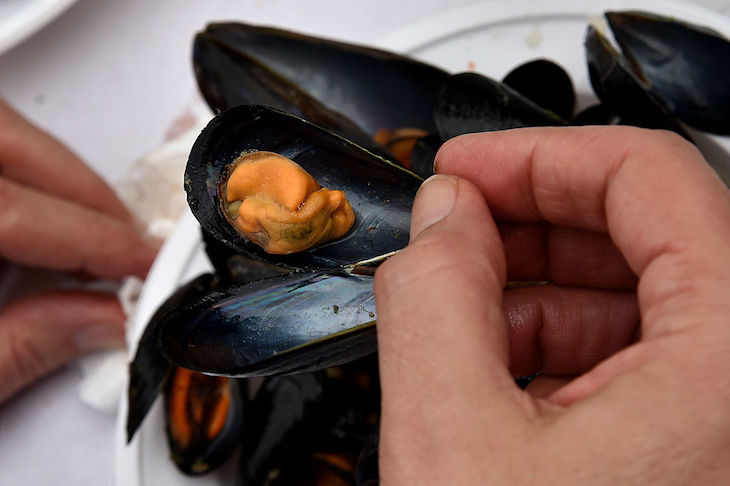Tate St Ives is a pale 1980s block, with a fat rounded porte cochère and sea-stained walls. It is the kind of house Iron Man would build if he lived in New Malden, but St Ives has always welcomed money. It is an oddity in the land of cows, pilchards and tin, beloved of retirees, surfers and urban survivalists. You can, for instance, buy a £100 rucksack at a shop called the Common Wanderer, which also sells the book Wildside: The Enchanted Life of Hunters and Gatherers. I suspect this enchantment is news to the Cornish, and always has been. St Ives is a place of tribes then, with at least three different villages sitting above the beach where surfers frolic. Then there is the art gallery.
It is very self-consciously an artistic ‘hub’. I appreciate bad art, because good art might come later if you are patient enough. Even so, I avoid the gallery; it makes me long for Mark Gertler’s ‘Merry-Go-Round’, which hangs in what should be called the Tate Gallery, but is instead called Tate Britain. There is a bright, white café on the fourth floor. It is a gallery café with no native atmosphere to impede the art which is in this case a series of ceramic Cornish pasty paintings by Simon Bayliss, including something called ‘Untitled (metaphysical pasty)’. ‘The idea to crimp the edges of his ceramics like a Cornish pasty came to Bayliss “as an epiphany” reflecting the artist’s playful engagement with the context in which he lives and works’ is his excuse, in prose. I think this means the idea came to him when he was eating a Cornish pasty, and there is nothing wrong with that, except that an artwork explaining a Cornish pasty cannot be more useful or interesting than a Cornish pasty.
‘Citizen of Nowhere’ says one pasty, sadly; and Bayliss grew up in Devon, it is true.









Comments
Join the debate for just £1 a month
Be part of the conversation with other Spectator readers by getting your first three months for £3.
UNLOCK ACCESS Just £1 a monthAlready a subscriber? Log in